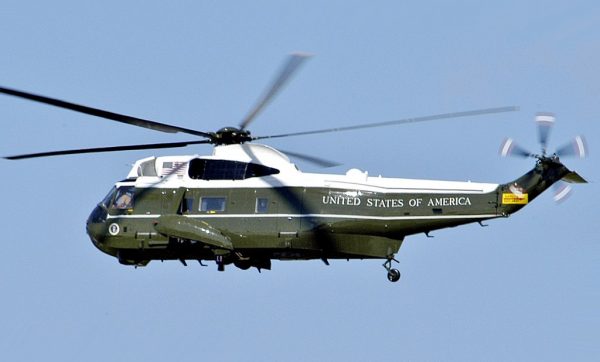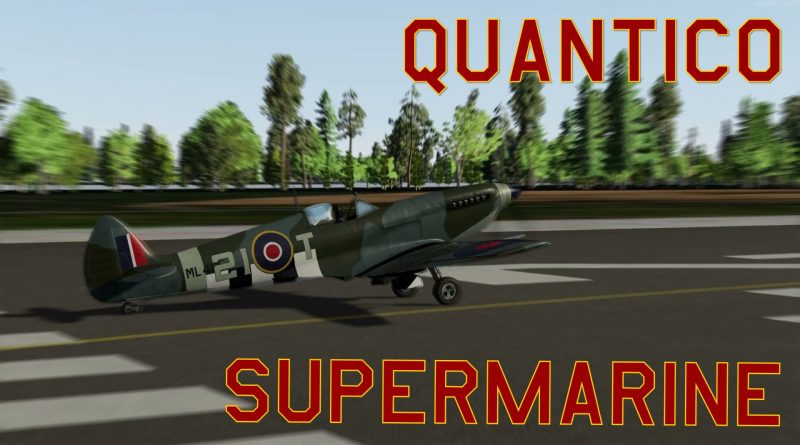CHAIR FORCE: Quantico Supermarine
Grab your tea and biscuits because we are climbing into a Supermarine Spitfire Mk IX for a short hop to Quantico Marine Corps Air Field to see the home of Marine One (video below).
It will be the won’t be the brand-new Sikorsky VH-92 helicopter, which flew its first presidential mission a few days ago at the Democrat National Convention in Chicago. Instead keep your eyes peeled for the trusty old VH-3 Sea King, which has been flying presidents around since John F. Kennedy.

Marine Helicopter Squadron 1 (HMX-1) operates several VH-3s, and when carrying POTUS, they use multiple helicopters which change places in formation, like a presidential shell game, so potential bad guys won’t know which bird he is actually riding. Army crews used to share the mission with the Marines, and when the president was onboard the helicopter was called Army One. In fact, the famous image of Richard Nixon leaving the White House for the last time is in fact manned my soldiers.

Gerald Ford was the last president flown by the Army’s Executive Flight Detachment when Ford flew to Camp David on June 14, 1976. Since then HMX-1 had the duty full-time.
The modern VH-3D has seating for 16, including two Secret Service agents. It carries armor plating, electronic countermeasures, and can withstand an electromagnetic pulse from a nuclear attack. HMX-1 also operates VH-60N “White Hawks” and “Green Top” CV-22B Ospreys, which you will likely see parked on the flight line.
The “X” in HMX-1 signifies “experimental,” and that is because back in 1947 Marine Corps Commandant Gen. Alexander A. Vandegrift determined that atomic weapons had made World War II-style amphibious landings obsolete. Instead of landing craft carrying massive formations of leathernecks to a fairly predictable spot of beach, where one atomic weapon could easily vaporize tens of thousands of men, General Vandegrift wanted the ability to send Marines ashore in helicopter. Problem was, the technology wasn’t there yet. The primitive-looking Bell 47 seen on television’s M*A*S*H had just been invented, so it would take time before helicopters would be unloading squads of Marine riflemen. The job of developing the tactics and techniques for the airborne amphibious assault, plus finding a helicopter that could do it, went to the Marines of HMX-1.
10 years later HMX-1 got a new mission. President Dwight D. Eisenhower needed to get back from a vacation in Rhode Island in a hurry. He could either wait two hours for a motorcade, or Marine choppers at Quantico could have Ike back at the White House in seven minutes. Cold War presidents needed to be places fast, so helicopters became the best way to move. 12 presidents later, the “Nighthawks” are still testing, evaluating, and developing new tactics in addition to their VIP transport duties, hence the “X” in HMX-1.
